
Going into this RET experience I had a semester of undergraduate research experience in 2010 working with the genetics of a beet plant. Skip forward through my undergrad and 5 years of teaching to the summer of 2018. Now I’m working in a chemistry lab isolating single walled carbon nanotubes aka SWCNT using the chemical and physical properties of the SWCNTs. SWCNTs are less than 100 nm, made of only carbon and have the appearance of a tube. Just a little, okay maybe more than a little different than working with a beet plant.Good thing I have a positive attitude and love to learn! Plus carbon nanotubes are cooler than plants and less messy.
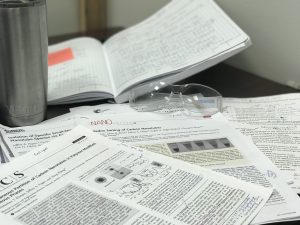
When I arrived to the lab I was given my own station with a stack of articles and a computer. I read through the articles, took notes, and used the computer to look up more articles and information. Most of the articles that I read didn’t include their protocols (procedures) within the paper so I would have to look somewhere else for that. The papers focus mostly on the theory of why the chemistry should work. I was perfectly content reading and thinking and reading some more, but my mentor and the rest of the people in the lab were ready for me to actually do something. This is a small lab of 5 people including myself and the professor. My goal is to sort the SWCNT sample by the properties of the SWCNT. By influencing the solubility of the SWCNT I can isolate the semi-metallic SWCNT in a hydrophobic solution while the metallic SWCNT will be in the hydrophilic solution.

My mentor Yu took me into the lab and helped me to start my stock solutions. Let’s just say I have room to grow or rather to slow down and be more gentle. I was surprised by just how fluffy and light the SWCNT sample was. They went flying as I tried to reach my scapula in. That’s when I learned that using weighing paper to get your substance is actually easier. All of the solutions have an easy to follow “recipe” because their concentration is determined by using the mass. LOVE THAT MATH! <– I do my students …. let’s just say formulas are their best friends.

I will quickly summarize the steps that I took to create my unsuccessful separation. 1. Disperse SWCNT 2. Combine Correct Amounts of Solutions Into Eppendorf Tube 3. Centrifuge the Eppendorf Tube 4. Pipette Out Your Top Layer of Semi-metallic SWCNTs!
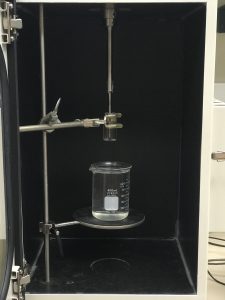
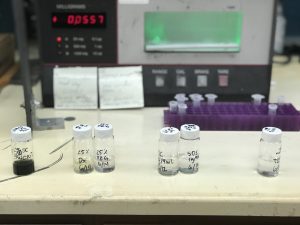
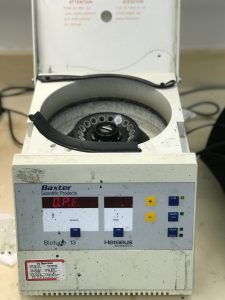
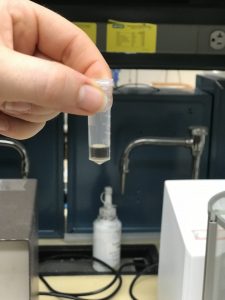
I would give myself a solid 2.5/4. I have followed 3 different protocols to isolate the semi-metallic SWCNTs from the metallic SWCNTs and each protocol has not been successful. Instead of separating the semi-metallic SWCNT from the metal SWCNT I’m just separating all of the SWCNT from the bottom phase of Dextran.
No one in the lab is surprised though, they are supportive and have assured me that it takes a while to figure out how to correctly separate the SWCNT using this particular protocol. Also, the tiniest of mistake in a measurement can lead to an unsuccessful trial.
My takeaway: I need to learn more about the surfactants and how they interact with the oxidizing agent. I will look for articles about the basics of dispersion and review oxidation of SWCNTs. Translated: I need to understand my ingredients better and how they affect my SWCNT
1. http://www.univie.ac.at/spectroscopy/fks/forschung/ergebnisse/nanotubes.htm
2, 3. https://what-is-nanotechnology.com/5CNTs-dispersions-carbon-nanotubes-CNTs.htm
4. Redox Sorting of Carbon Nanotubes
DOI: 10.1021/nl504189p

Hey Anna,
I totally agree with you. Weighing IS difficult. Usually in my lab, we work with grams and it ok if you over or under a little but in my research we are working in mg. I have to be super careful in the measurement otherwise my whole sample is ruined. Good luck! Your positive attitude will make you succeed! 🙂
I have the same experience.. not about weighing but measuring things in micro litters. In my lab we use the micropipettes a lot to dilute, combine different small amounts of things (sometimes we only use solutions that are 5 micro litters). The amounts are so small that sometimes I don’t know if I am putting too much or too little and some of the dyes are so viscous that sometimes a tiny amount stays on the tip and now you don’t have the exact amount you were hoping for.